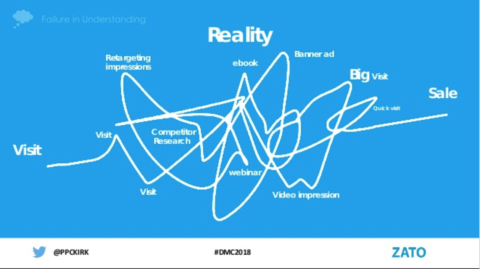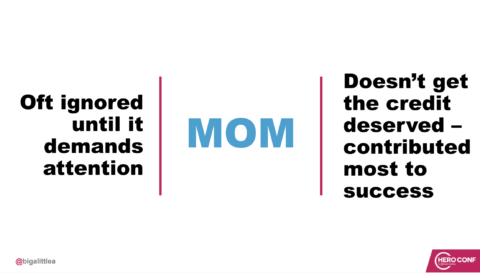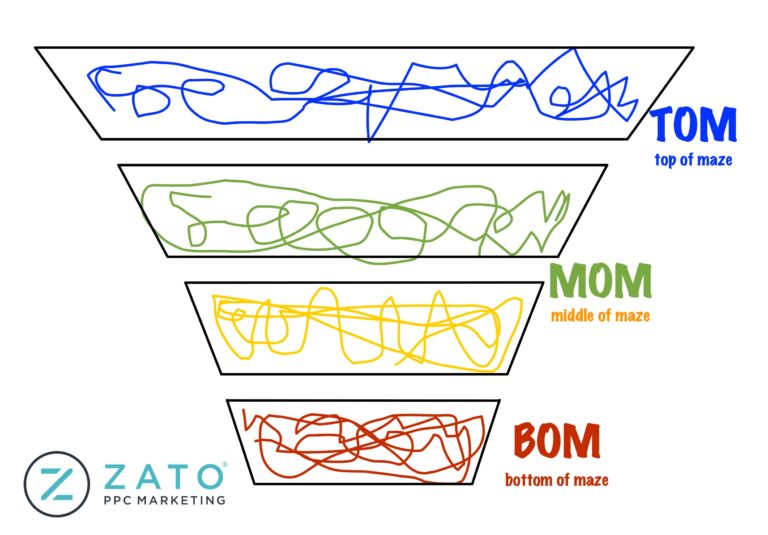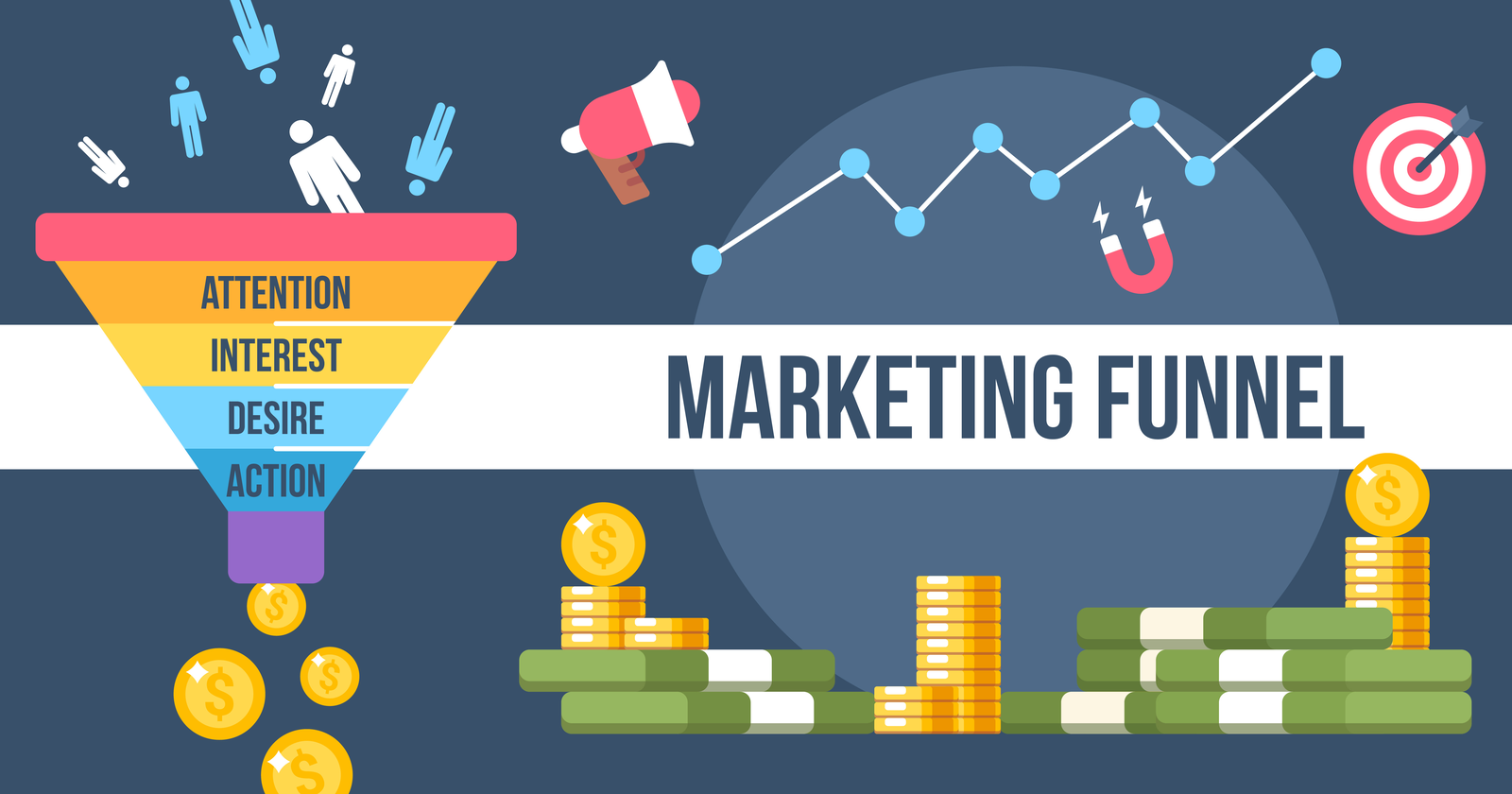Unless you’ve been living under a rock (stone/pebble/hard surface… outdated keyword variant joke, sorry) in the digital marketing world, you’ve likely run across at least one confident declaration in the past 12 months that the traditional marketing funnel concept is dead.
Or dying.
Or maybe maimed.
Or at least, shot in the foot.
The marketing funnel, for those unaware, is a concept created in 1898 to describe the “theoretical customer journey” and assist in targeting the right message to the right person at the right time.
If, for instance, someone is just curious about your business you don’t want to “ask for their hand in marriage” by pushing them too hard for the sale, but rather “court them” by focusing on answering their questions and moving them to the next stage of the funnel.
The funnel is typically seen as four categories (see below) that move from a broadening group of people (cold leads) to a smaller, more targeted and closer to purchase group of people (hot leads).
- Awareness
- Interest
- Desire
- Action
The logic is that people who have a desire for your product are fewer, and closer to purchase (from you or a competitor) than people who are just becoming aware of your product.
Thus, you need to cast a wider net at the beginning to get in front of people, and then move people further “down the funnel” to get sales.
Easy-peasy, right?
Well, sort of.
It has been somewhat widely accepted until we 21st Century chronological-snobbists began to scoff it away and proclaim that digital has changed everything inexorably and irrevocably.
But has it?
I want to examine whether the marketing funnel really is outdated and kaput because of the influence of digital.
I then hope to prove that in fact, our understanding of the marketing funnel has simply evolved and we see its intricacies more clearly than ever before… while the core philosophy under-riding it all remains solid.
I realize there is a lot of philosophy here, but I think that is core to providing a good foundation for our tactical advertising choices… so let’s dig into the arguments.
Legitimate Concerns with the Marketing Funnel
Enter the marketing funnel haters! LOL, I’m kidding.
There are those who are questioning the validity of the traditional funnel, and for good reason.
I used the idea of a maze last August for a #UtahDMC 2018 session I presented, noting the difficulty in accurate attribution, even in our digital age of tracking:

The general consensus of the “funnel killers” I’ve run across is a good one: that is, user engagement with a business is far more complex now than it was in 1898.
This is exceptionally true, and an important note – though I don’t think it undermines the funnel concept.
My main concern with this line of thinking as it pertains to the funnel eventually comes out in some way similar to this:
“People can interact with a business in multiple ways on multiple devices (many of those completely untraceable visits), so we need to think of a new way to describe this besides the marketing funnel, because obviously the user journey is more complex than it used to be.”
What I take issue with, and the reason for this post, is the main assumption at the end of that made-up quote as it pertains to the funnel.
Two Core Unchanging Funnel Principles of Importance
I would ask: “is the user journey truly more complex in the broader customer journey categories themselves, or are we actually better seeing the inner workings of each broad category more clearly?”
That is, should we rethink the entire structure, or is what we are seeing in its complexity simply a more advanced look into the mechanism of the funnel itself.
I would posit, that nothing has changed in these primary principles of the marketing funnel and it is, in fact, the second option in my statement above.
Here are the two core, unchanging principles that I see in the marketing funnel:
- There are stages of customer intent that change over time moving from less to more intentional in purchase behavior.
- These stages of customer purchase intent correlate with the number of people in those stages (i.e., more people in awareness, fewer closer to purchase action).

In this way, I think the best way of illustrating marketing today is an adaptation of a presentation I saw at HeroConf 2019 by my brilliant friend Aaron Levy of Tinuiti (the agency formerly known as EliteSEM).
Levy described the concept as a “maze” similar to what I and others have in the past, but with the helpful inclusion of the “Top/Bottom” qualitative intent language to describe some sort of inter-categorical movement (of which is, if you remember, one of my core unchanging principles of the marketing funnel).
Based on this updated concept, I think the following award-winning, hand-sketch graphic is the best attempt I can make at expanding on, and visualizing the marketing customer journey today and beyond:

Yes, we have social which is new from 1898, and email, and paid search, and organic, and still in-store visits, and Amazon store visits and all the rest of the things that come with marketing today.
But overall, these visits all still arguably follow those two core principles of the marketing funnel.
What this means practically is that you can still identify unique audiences, where they are in the funnel, and then craft a message that meets them within that funnel.
If you don’t see any correlation to the marketing funnel in your marketing, perhaps the weakness isn’t in the funnel itself – but in your business audience identification capabilities.
If I had one actionable call-out I want you to get from this post, it would be this:
Work on segmenting your audience targeting and efforts on identifying which of these four broader funnel categories you are going after here, and craft messaging/creative to support that.
In Summary
As we consider the concept of the marketing funnel, it’s tempting for us in the midst of the mess we marketers try to track every day, to throw our hands up and exclaim “it’s all chaos!”
However, I would (and have) argued there to still be a purchase intent progression that takes place in the customer journey.
That is, and always has been the marketing funnel and rather than kill it, we need to realize the genius of it.
120 years later, it still enhances our ability to understand the different phases of the buying journey, and even if we have more access into the true mess that is each “phase”… and even if those phases sometimes do shift around or get skipped, the overall principle still remains.
That is, people have always purchased, and still purchase by walking through these categories:
- Awareness
- Interest
- Desire
- Action
More Resources:
- How to Write Content for Each Stage of Your Sales Funnel
- 5 Ways to Move Your SEO Programs to Target the Top of the Buying Funnel
- 5 Demand Generation Tactics That Work in PPC
Image Credits
All screenshots taken by author, June 2019




